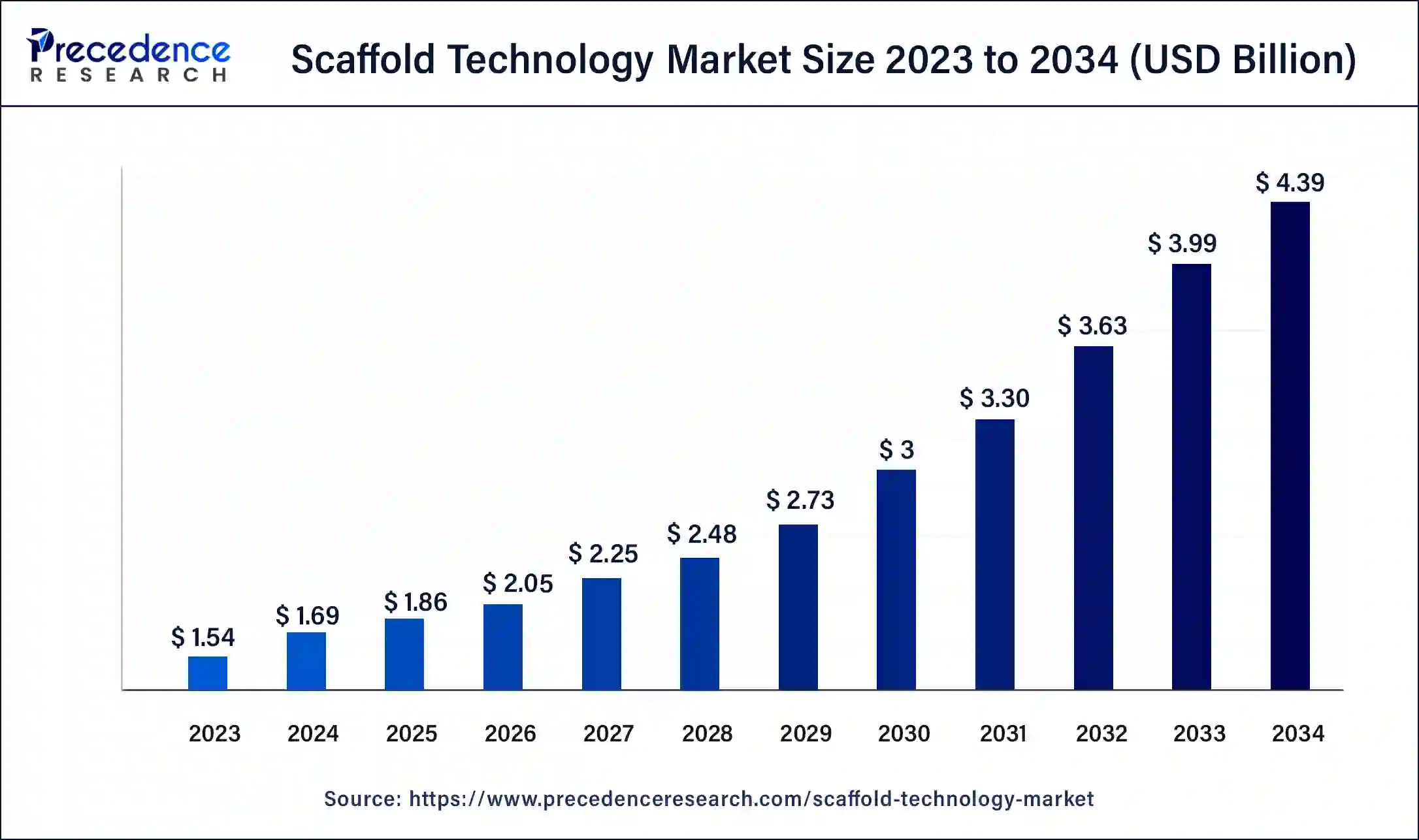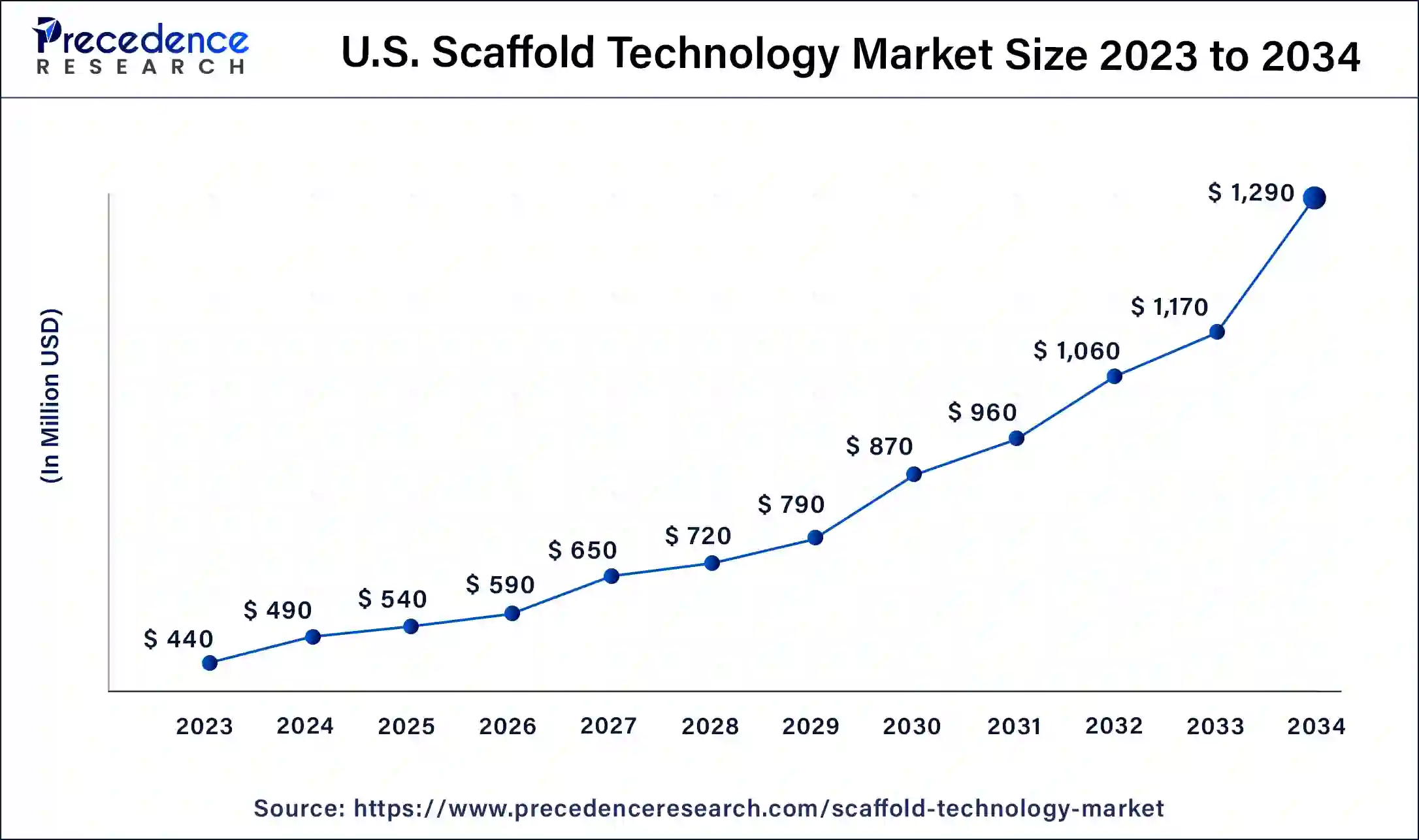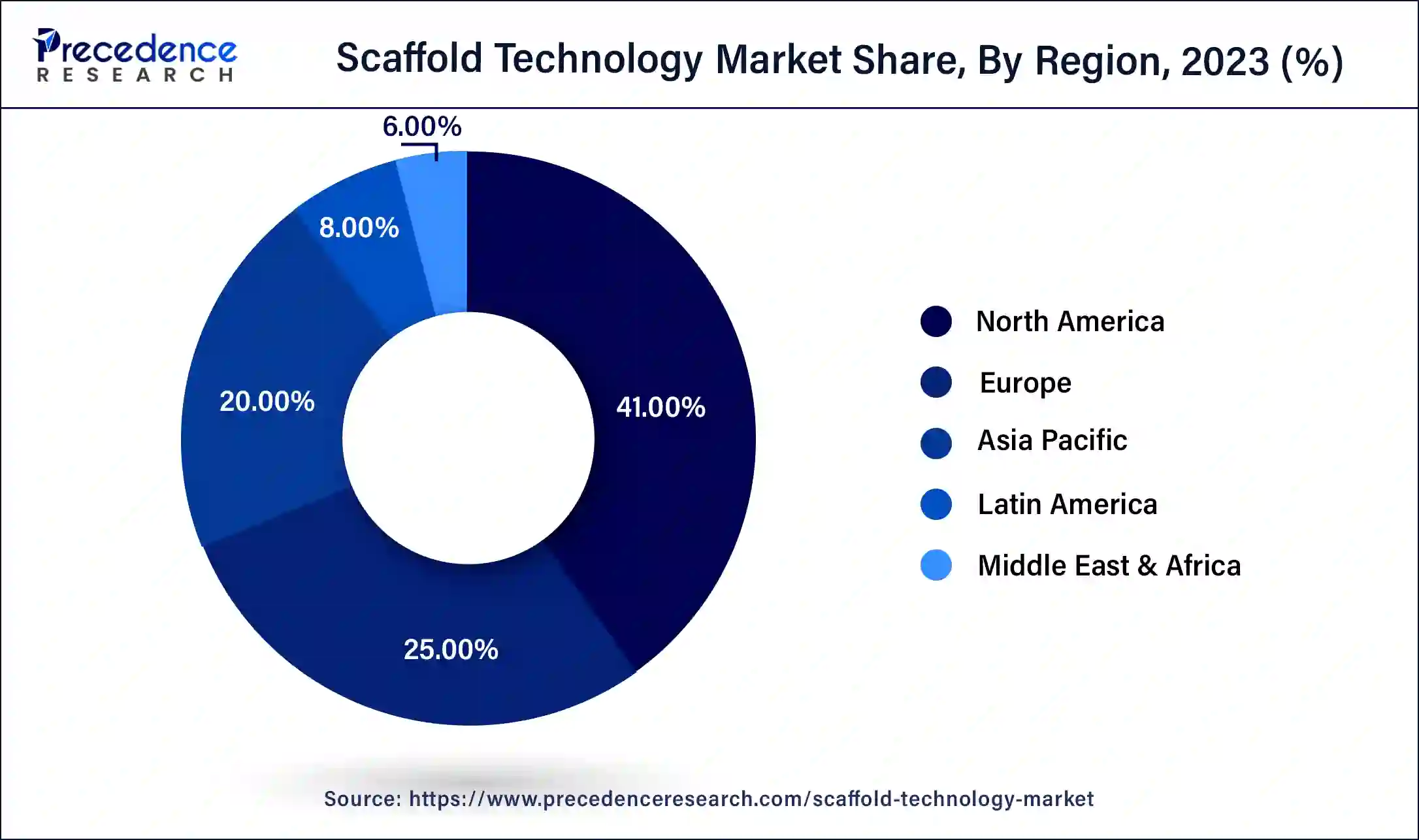September 2023
The global scaffold technology market size was USD 1.54 billion in 2023, calculated at USD 1.69 billion in 2024 and is projected to surpass around USD 4.39 billion by 2034, expanding at a CAGR of 10% from 2024 to 2034.
The global scaffold technology market size accounted for USD 1.69 billion in 2024 and is expected to be worth around USD 4.39 billion by 2034, at a CAGR of 10% from 2024 to 2034. Increasing application in the replacement, regeneration, and refurbishment of damaged and unhealthy tissues and organs are driving the growth of global scaffold technology. Moreover, the cumulative R&D venture, rising need for organ transplantation, progression in tissue engineering are driving the growth of market.

The U.S. scaffold technology market size was estimated at USD 440 million in 2023 and is predicted to be worth around USD 1,290 million by 2034, at a CAGR of 10.2% from 2024 to 2034.

The research report incorporates key trends and prospects of scaffold technology products across different geographical regions including North America, Europe, Asia-Pacific, Latin America, and Middle East and Africa.North America is anticipated to control the scaffold technology market on account of well-developed infrastructure, continuing research, and the attendance of key market participants in the region. North America rules the market due to huge number of cancer patients recorded and cumulative death toll on account of cancer. As per WHO, cancer comes 2nd as the chief reason of death worldwide with around 9.6 million deaths in 2018 which influences the market growth. Upsurge in funding by government and regional companies subsidizes the market growth with continuous R&D attempts that aid in the growth of this technology.
Though, the scaffold technology market in Asia Pacific is likely to register the highest growth rate throughout the estimate period, due to the snowballing government focus on increasing research and development in the pharmaceutical sector and the refining health care infrastructure in the region.

The tissue engineering is multidisciplinary and interdisciplinary sector. It has revealed huge promise in producing living substitutes for harvested organs and tissues for reconstructive and transplantation surgery. Materials and fabrication technologies are significantly imperative for tissue engineering while designing artificial, temporary extracellular matrices or scaffolds which support 3D tissue formation. The vital influence motivating the scaffold technology is the snowballing R&D efforts and the benefit of substituting animal trials with the help of real time biological environment research. This research considers regulatory and ethical issues. With the snowballing application of scaffolds, researchers can better comprehend biological activity of specific treatment on human body. As synthetic scaffold does mimic the biological environment, they are obviously favored over animal trials. Further, technology has progressed the way scaffold are manufactured. Producers are now including the use of 3D printing technology in the scaffold manufacturing procedure.
| Report Highlights | Details |
| Market Size in 2023 | USD 1.54 Billion |
| Market Size in 2024 | USD 1.69 Billion |
| Market Size by 2034 | USD 4.39 Billion |
| Growth Rate from 2024 to 2034 | CAGR of 10% |
| Base Year | 2023 |
| Forecast Period | 2024 to 2034 |
| Segments Covered | Type, Application, End-User |
| Regional Scope | North America, Europe, Asia Pacific, Latin America, Middle East & Africa (MEA) |
Hydrogels segment verified the prime market share more than 40% in the scaffold technology market in 2023. This high share is on account of properties connected to the use of hydrogels, like ease of loading cells and drugs for controlled drug delivery. Since, past few years, hydrogels have attained request as a foremost candidate in tissue engineering and 3D cell cultivation. Continuing technological progressions in the microfabrication of hydrogels are predictable to push growth of this segment.The nanofiber-based scaffolds segment is predicted to eyewitness the rapid growth throughout the prediction period. The nanoscale fibrous structures with interconnecting pores intended by the electrospinning technique ease the development of artificial functional tissues through tissue engineering.
Among different end-user segments, regenerative medicine, stem cell therapy, and tissue engineering led the global market revenue with a share more than 66.5% in 2023 and is probable to observe the robust growth from 2024 to 2034. High application of scaffolds in aesthetic surgeries, wound healing, soft tissue tumor repair, periodontology, abdominal wall repair, and colorectal surgeries augment the revenue generation in this segment. The requirement for portable and robust tools for drug development and discovery rushes the application of scaffold technology in the drug discovery sector. The ability of 3D cellular models to imitate the microenvironment for the etiology studies and pathway elucidation has shown reimbursements over traditional processes procedures including mono layer cell cultivation
Orthopedics, musculoskeletal, and spine segment seized the major revenue cut above 51% in 2023 due to upsurge in the occurrence of orthopedic and musculoskeletal complications. Hence, the arrival of novel technologies like electro spun nanofiber scaffolds produced for the engineering of orthopedic tissues flourishes the segment growth. Additionally, neurology segment is likely to inflate at the rapid growth rate throughout the prediction period on account of incessant R&D in regenerative solutions in case of neurological ailments.
Major Market Segments Covered
By Type
By End-User
By Application
By Material
By Geography
For inquiries regarding discounts, bulk purchases, or customization requests, please contact us at sales@precedenceresearch.com
No cookie-cutter, only authentic analysis – take the 1st step to become a Precedence Research client
September 2023
February 2025
November 2024
August 2024